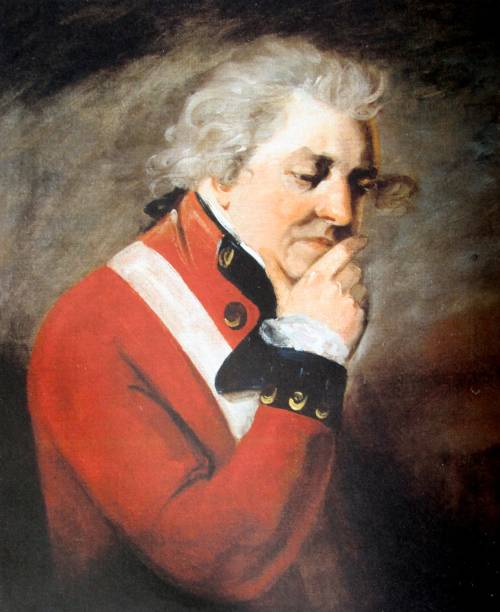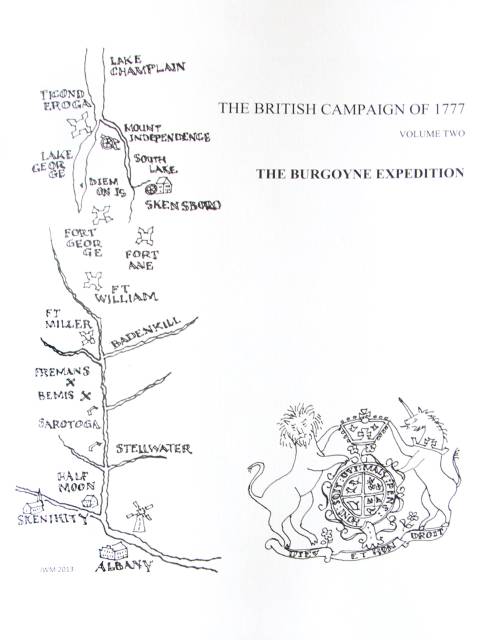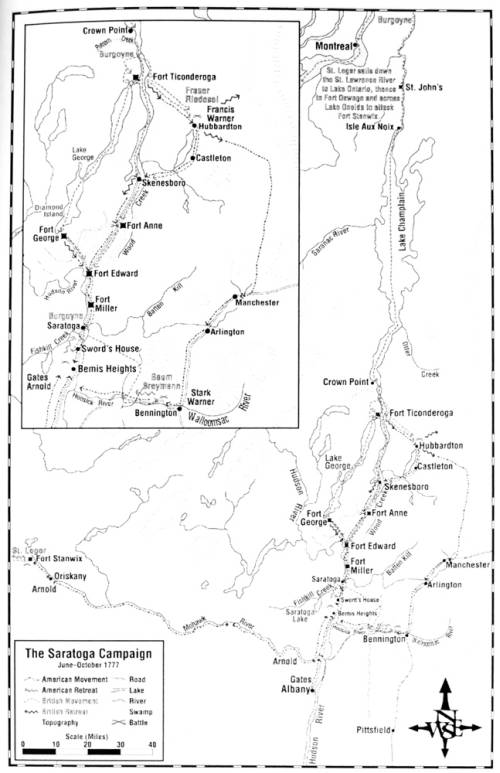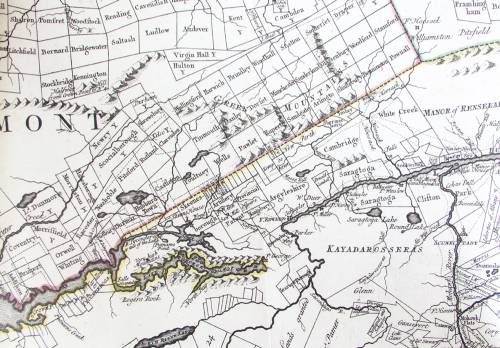The British Campaign of 1777, Volume Two - The Burgoyne Expedition: Burgoyne's Native and Loyalist Auxiliaries
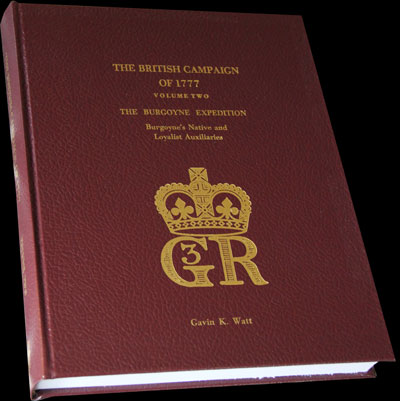 by Gavin Watt with research assistance of Todd W. Braisted
by Gavin Watt with research assistance of Todd W. Braisted
This new book is a companion piece to Volume 1, The St. Leger Expedition. Similar to the first volume, the second will appeal to readers who enjoy the minutiae of the military campaigns of the American Revolution.
While this book is essentially a military work, many readers will find it useful for genealogical research.
The majority of accounts about military campaigns concentrate on the big-name personalities who directed operations or commanded large formations. Their backgrounds and characters are minutely examined and their performances critiqued in depth, whereas the 'little' fellows who commanded batteries, companies and platoons and the even 'littler' men who did the rowing, heaving, carrying, digging, patrolling, guarding, fighting, bleeding and dying are rarely more than nameless ciphers. In contrast, this book is primarily about the 'little' and 'littler' men.
As Burgoyne's army was a great deal larger than St. Leger's "light expeditionary corps," other than a brief 'background' section about his Canadiens, the focus of Volume 2 will be on his native and American loyalist auxiliaries. Hopefully, a third volume will cover the Canadiens in detail - his two militia companies; body of fighting volunteers, and artificers and cart drivers.
For the loyalists - i.e. the Provincials - names, ranks, regiments and service details are supplied and, in many cases, domicile, trade, family details, and place of postwar settlement. Of no surprise, some men appear on unit rosters once or twice and then disappear without a trace. In other cases, substantial military details have been found, but nothing about a man's civilian background or later settlement.
Once again, it has proven impossible to identify more than a handful of natives, but the participating nations, their alliances, and a detailed analysis of the Quebec Indian Department are provided.
This volume will be a treasured addition to your personal library, bound in a deeply grained dark burgundy Tanotex with gilt stamping on cover and spine.
368 Pages. Hardcover, 8.5" x 11." Illustrated, maps, bibliography, endnotes, genealogical index, surname concordance, general index
Global Heritage Press, Milton, 2013
ISBN 978-1-926797-70-0 (hardcover)
REVIEWS AND COMMENTS
Nicholas Westbrook - October, 2017
You will also want to look at the numerous reference to Barry (St. Leger) in Gavin's magisterial biographical compendium, of which I believe that only vol. 2 has been published:
(2013) Watt, THE BRITISH CAMPAIGN OF 1777, vol. 2: The Burgoyne Expedition--Burgoyne's Native and Loyalist Auxiliaries (Milton, Ontario, Global Heritage Press).
Michael Gabriel, Kutztown University, November 2013
Hi Gavin, I just wanted to let you know that I recently bought the CD version of your new British Campaign of 1777 Volume II (and Volume I actually) and think that it is outstanding. I'm impressed by the amount of work that you did, and the illustrations and maps very good. I especially like that it's fully searchable, which is a tremendous time saver. Congratulations on this work, and thanks for mentioning me in the Acknowledgements. I hope that all is well with you.
Peter W. Johnson from the Loyalist Gazette, September 2013
I have given glowing reviews to Gavin's books in the past, but there are some particular reasons why this latest venture should be of interest to Loyalist descendants above and beyond what was offered in previous books.
Perhaps it's most easily explained by an e-mail quotation from Gavin:
I believe it is the only study out of a great number of studies of Burgoyne's Campaign that focuses on native and loyalist participation. All too often, the scant mentions of their activities carry some sort of undercurrent of criticism, especially with the natives. Loyalists are most frequently ignored as contributing almost nothing.
That's the first point. Here you have a book on the Campaign with a focus on the Loyalists and their Native Allies. It's been long overdue. The second point concerns UELAC applicants and how many of them tackle the application--specifically the box that asks for their Loyalist ancestor's military service. Among the Loyalists who settled in Quebec (modern Quebec and Ontario), it is not uncommon to find veterans of the Second Battalion of the King's Royal Regiment of New York and (Jessup's) Loyal Rangers.
That's fine, and applicants often record an ancestor's service in one of those corps. Applicants, however, should stop and consider that both of the corps were formed in the second half of the war. For the soldiers therein, it meant they could have joined one of them as their first service during the war, or it could mean they had considerable previous service. Think about it. If your ancestor had war service previous to 1780, wouldn't you want to know about it, and wouldn't you want to include it in your application? Not doing so would be rather like studying the Second World War, but ignoring the events of 1939 and 1940 in favour of the later years.
Therefore, if your ancestor settled in the stated area, there is an excellent chance that he was involved in the Burgoyne Campaign--and this is the book that is going to give you the particulars. If you had ancestors in the two corps previously mentioned, this book could be termed essential reading. I should also add that there were Loyalists whose military records did not extend to the end of the war, so this book may encapsulate their only service.
The first part of the book sets the stage for the campaign and prepares you for what's to follow. The bulk of the book focuses on the dizzying number of early Loyalist corps that were involved with Burgoyne. These include Adam's Rangers, MacKay's Loyal Volunteers, Munro's Batteaux Company, Jessup's King's Loyal Americans (not to be confused with the later Jessup's Loyal Rangers), and Peter's Queen's Loyal Rangers to name a few. Hardly household names, but your ancestor may have served in one or more of them. For each corps there are muster rolls and biographical information on the individuals. For example, if your ancestor happens to be Private Samuel Buck of Samuel Adam's Independent Ranging Company, you will discover that he came from Arlington, Vermont. In the biographical section, you will learn more about his dates, height, where settled, and his war service. Sounds wonderful, doesn't it!? Of course, the amount of biographical information will vary from individual to individual. This part of the book even includes a Surname Concordance to help you with the possible variations of surnames. For example a common name such as Reynolds can appear as Runnels/ Runnells, Runnols.
The third section of the book covers the Canadiens, and the final section deals with the Natives. Both areas present some challenges when it comes to biographical information for individuals, but you would be hard pressed to find better coverage elsewhere.
There is an index, and it's rather important for this book because an ancestor may have served in more than one corps at different times, so you will want to locate his complete record of service.
Clearly this is a book of great significance for Loyalist descendants and, of course, for those simply interested in the time period. It is available through Global Genealogy on the website.
Eric Schnitzer, Park Ranger / Historian, Saratoga National Historical Park – October 22, 2013
The British Campaign of 1777, volume two, The Burgoyne Expedition, is simply the best and most intensive study of the Loyalist Americans who served with the 1777 Army from Canada commanded by Lieutenant-General John Burgoyne ever published. It is and will always remain an essential reference book on the subject, covering the various Royalist regiment and corps unit histories, organizations, and personnel biographies The expertise and thoroughness of its author, Gavin Watt, and Todd Braisted, research assistant, are second to none.
Bob Lendt of Bath (Lansing) Michigan, July 2013
Hi Gavin,
I have received volume two of "The British Campaign of 1777' and I must say that it is totally impressive. The physical quality of the book is beautiful and the research which went into the biographies of the campaign's participants is breathtaking. The result is a real genealogical treasure for anyone with an ancestor connected to Burgoyne's expedition.
Thanks also for generosity crediting my efforts to document the Lemuel Caswell and Henry and William Clow families. Your bibliographic entries in the text will add some additional sources to make their profiles more complete in their respective family trees.
John D Reid - SOURCE
This is the second volume in what is planned to be a three part work on the war between the newly declared United States of America and the British with their allies. The first volume, published in 2005, was on the St. Leger Expedition. The Forces of Crown and Congress, Second Edition.
The book is divided in four parts. Part one, Burgoyne's Expedition, puts it in context, introduces the main events of the actions which occurred between lake Champlain and Albany, NY, gives a timeline and cast of important characters.
Part two, The Americian Provincial (Loyalists), 286 pages, starts with 37 pages of background. Then for each of Jessup's King's Loyal Americans, Adams's Independent Ranging Company, Peters's Queen's Loyal Rangers, Hawley's Bateaux Company, Pfister's, Mackay's & Leake's "Loyal Volunteers", McAlpin's "American Volunteers", Munro's Bateaux Company and others there are listings of the soldiers by rank, surname, given name and residence. For each there is a reference to more detail, sometimes including year of birth.
Private John Smith served with Jessup's King's Loyal Americans. From his listing we learn details of his service:
Parts three, "The Canadians" and four "The Natives" are shorter with much less of genealogical significance.
Genealogists whose first reaction in picking up this type of book is to turn to the back seeking a name index will find 22 pages filled with small type. That follows a bibliography listing the resources consulted.
I have no known relationship to the five Reid entries included; if I did I'd certainly welcome the detail and context provide. Wouldn't you welcome a book like this summarizing the experience of your WW1 fighting ancestors? Those with Loyalist and other ancestors included are fortunate to have such a detailed reference.
IMAGES
